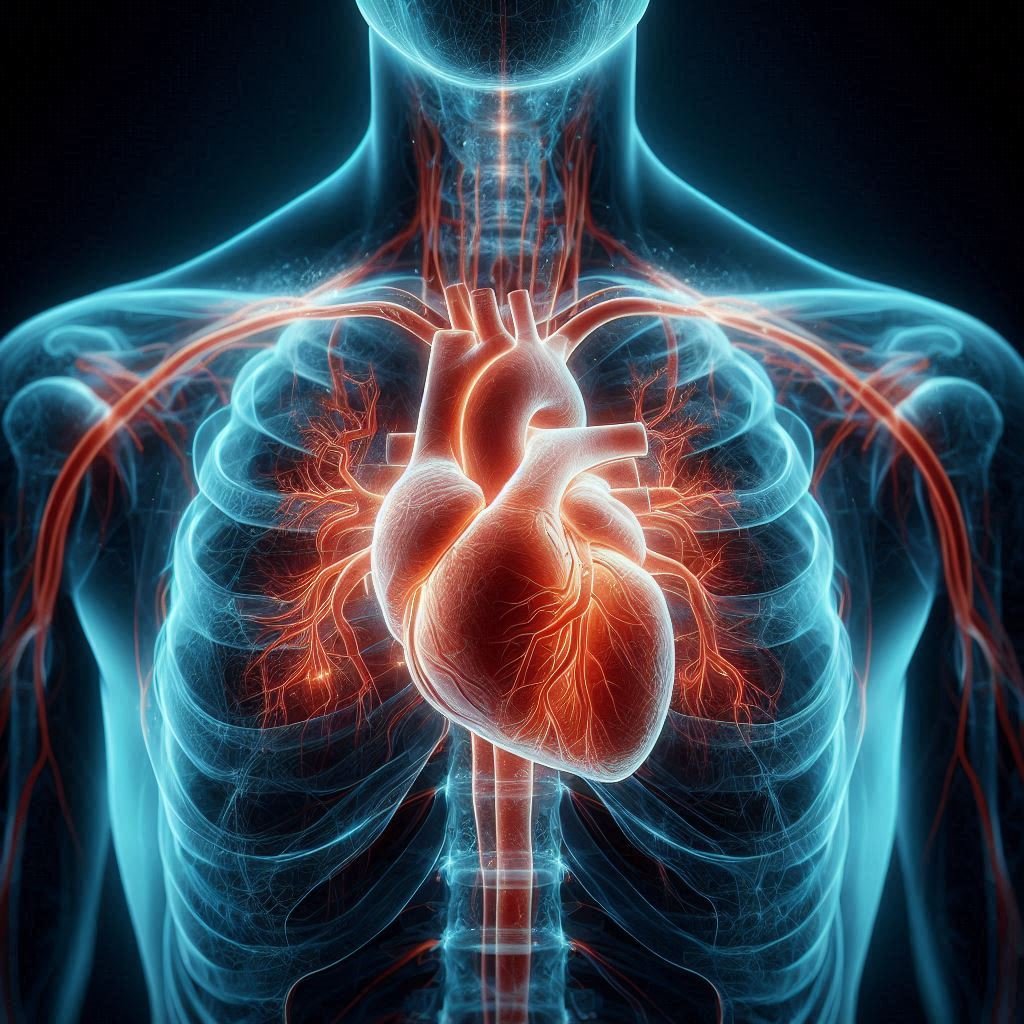
Superior vena cava syndrome (SVCS) is characterized by gradual, insidious compression/obstruction of the superior vena cava (SVC). Superior vena cava syndrome (SVCS) is a collection of symptoms caused by the partial blockage or compression of the superior vena cava, the major vein that carries blood from the head, neck, upper chest, and arms to the heart. Nearly 95% of SVCS cases are caused by cancer. It is located in the middle mediastinum and is surrounded by relatively rigid structures such as the sternum, trachea, right bronchus, aorta, pulmonary artery, and the perihilar and paratracheal lymph nodes. It extends from the junction of the right and left innominate veins to the right atrium, a distance of 6-8 cm. It is a thin-walled, low-pressure, vascular structure.
This wall is easily compressed as it traverses the right side of the mediastinum. SVCS can progress quickly to completely block the trachea (airway). When this occurs. Approximately 90% of cases are associated with a cancerous tumor that is compressing the superior vena cava. Syphilis and tuberculosis have also been known to cause superior vena cava syndrome. The most likely cancers to cause SVCS are lung cancer (especially small cell lung cancer), squamous cell lung cancer, adenocarcinoma of the lung, non-Hodgkin lymphoma, large cell lung cancer, and other cancers that spread to the chest.
Treatment of SVCS depends on the underlying cancer that is causing it. This treatment may include radiation, chemotherapy, or a combination of both. In some cases, surgical procedures may be performed to open (dilate) the vessel. Radiotherapy has been advocated as a standard treatment for most patients with SVCS. Endovascular shunts are being used increasingly often, as are thrombolytics if a thrombotic cause is present. Chemotherapy may be preferable to radiation for patients with chemosensitive tumors. SVCS may be treated with thrombolysis (treatment to break up a blot clot in the vein). Other short-term treatments, aimed at reducing symptoms, include raising the patient’s head, giving corticosteriods to reduce swelling, or using diuretics to eliminate excess fluid from the body.
Superior Vena Cava Syndrome Treatment and Prevention Tips:
1. Stent placement is also recommened.
2. Surgery to remove the blockage.
3. Thrombolytics is also treat Superior Vena Cava Syndrom.
4. Anti-coagulants are also helful against Superior Vena Cava Syndrom.
5. Catheter replacements is aslo use to treat Superior Vena Cava Syndrom.
6. Radiotherapy has been advocated as a standard treatment for most patients.
7. Chemotherapy may be preferable to radiation for patients with chemosensitive tumors.




